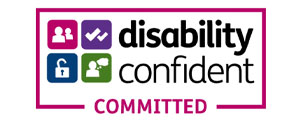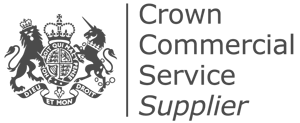Staying visible in a hybrid world
Hybrid working is here to stay, but we have to recognise that important changes need to be made in order to thrive in this new world. Working remotely gives employees greater flexibility and global connectivity. It also allows organisations to recruit more widely, enabling team members to join from almost anywhere. Many organisations have moved all their staff to hybrid working and downsized their offices, enabling colleagues to balance their work and life commitments more easily. The office for many people is now a tech platform, we can work from anywhere. What is there not to like?
All true, but of course any change brings new issues and hybrid working can result in many employees feeling less connected, with a sense of loss and lack of community within the workplace.
Collaboration can be the first thing impacted. Studies have shown two thirds of employees feel less connected at home; individuals feel like a ‘worker’ not a member of a ‘family’. If people begin to feel like workers rather than team members, there is evidence that it will impact negatively on morale and productivity.
When we spend less time working together face to face, we need to invest more time as leaders in our communication, checking in with colleagues both formally and informally. We need to be aware of proximity bias. Proximity bias describes how leaders tend to treat workers who are physically closer to them more favourably, and stems from the antiquated assumption that those who work remotely are less productive than those who work from the office. Proximity bias is not intentional, the mental short cut for managers can be that they make decisions on familiarity rather than objectives views. It can sometimes feel easier to evaluate the work of onsite employees and you can end up offering them more interesting projects because they are visible.
The opportunities for creating a more diverse workforce can suffer, people can feel a greater sense of exclusion; we have to be aware of how we communicate and engage with our employees and colleagues, to create a tangible sense of community where we all belong.
At Starfish we recognise that life is changing at speed, and we are here to help organisations in this unpredictable age by staying ahead of the curve and thinking creatively. We’ve recently run a series of webinars to help navigate the challenges that the new hybrid working world brings.
The visibility framework, recently shared by Victoria McLean CEO of City CV, in our webinar with Public Services People Managers’ Association (PPMA), gave us some interesting observations. Remote teams need consistent, inclusive interactions—but they need to be the right type, done in the correct way. This can be done in three ways.
- Social visibility,where you foster positive personal connections and building relationships in work time.
- Strategic visibility. Contributing ideas and advice on projects and having a say in business decisions.
- Supportive visibility. Building team members up by recognising and sharing their good work with others and creating equal opportunity situations.
What can we do as leaders to support visibility with our teams and colleagues?
- While virtual meetings allow greater attendance and flexibility, they can lack that social aspect. Some organisations now start their online meeting five minutes early to encourage social interactions.
- Encouraging staff to be more active on forums/team chats to connect beyond the transactional work discussions. Investing in our social dimension creates the glue for our teams and organisations.
- With strategic visibility, everyone should be given the same platform to contribute and give ideas whether they are working in the office or remotely. Leaders need to consciously recognise others and let everyone know about it, so that achievements and contributions can be acknowledged.
- Employees supporting colleagues has always been the key to a successful team. Being responsive and accessible is equally important wherever you are working.
- Communication and engagement is harder to get right across the different platforms, so it’s important to put the right training, support and measures in place. Our own definition of hybrid can be impacted by our different working habits. Our different environments, distractions and work-life balances all impact our view. You cannot ignore these experiences but working these into polices and expectations, can help with some of the challenges faced.
- In person inductions for new starters to provide more opportunities to learn and shadow.
- Requesting cameras are on in virtual meetings to encourage interaction and avoid distraction.
Hybrid working has shifted the focus for people and as leaders we need to invest in new approaches to ensure we are listening, communicating, and providing a work community which maximises potential. It is an ongoing process of connection, review, and response. No one has all the answers, and it is a constantly evolving leadership issue that needs focus and commitment. What is important is to recognise this, and put in place as much support throughout your organisations to support your team members to thrive.
Top Talent: Regeneration and Growth
The growth and infrastructure agenda remains central to the government’s mission, and local authorities across the country are key drivers.
Mastering the Chair and Chief Executive Partnership: Insights from Our Latest Webinar
We recently hosted the second session in our Aspiring Chief Executives webinar series, focusing on a crucial theme for any leader entering the charity sector: Mastering the Chair and Chief Partnership. The session, led by our own Louise Beales, Prinicpal Consultant, and special guest Ciara Eastell, an experienced charity CEO, Chair, and coach, both provided a wealth of practical advice for those stepping into executive roles, especially within non-profit and charitable organisations.
Mastering the Chair/CEO Partnership: Your First 100 Days and Beyond – A Starfish Search Webinar
Starfish is dedicated to supporting leaders at every stage of their journey and we know that one of the hardest steps is how to go about finding the right opportunity, and what to expect when you get your first chief executive role. We are pleased to be running a webinar for our new Aspiring Chief Executives programme.
ACCREDITATIONS


ESPO is a public sector owned professional buying organisation (PBO), specialising in providing a wide range of goods and services to the public sector for over 40 years. Starfish Search has been awarded a place on ESPO’s Strategic HR Services framework (3S). Services we offer under the framework include: Lot 1, Executive and Managerial Interim Recruitment Lot 2, Executive and Managerial Permanent Recruitment.


Starfish are proud to be certified Disability Confident Committed. This scheme provides employers with the knowledge, skills and confidence needed to attract, recruit, retain and develop disabled people in the workplace.


Crown Commercial Service supports the public sector to achieve maximum commercial value when procuring common goods and services. In 2020/21, CCS helped the public sector to achieve commercial benefits equal to £2.04bn - supporting world-class public services that offer best value for taxpayers. Starfish Search has been named as a supplier on Crown Commercial Service’s Executive and Non-Executive recruitment. Services we offer under the framework include: Lot 3 - Non-Executive and Public Appointments.


Bloom, launched in 2012 is the UK’s leading marketplace for professional services. They provide an end-to-end solution for the procurement, contract management and payment of all professional services, via the compliant NEPRO³ framework. Their public sector clients have access to 20 professional services categories and over 4500 accredited suppliers. Bloom provides swift routes to market via either direct award or mini competition. Starfish is an accredited supplier to BLOOM; our services can be accessed via this framework - Executive and Non-Executive Search and Interim Management.
Join the starfish team
We hire people who bring insight, integrity and ambition to their work. If you’re ready to contribute to shaping the future of leadership and you want to explore our current opportunities please get in touch.
